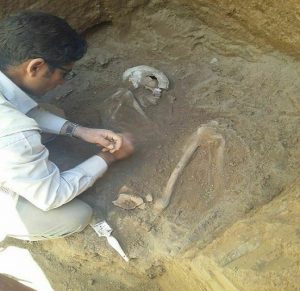Excavations on a hill in Shazand, Markazi province, Iran, revealed remains of a settlement dating back 8000 years. The site contains relics from different periods, starting from the Neolithic.

The stratigraphy of the site includes layers dated to the Neolithic, Eneolithic, Bronze and Iron Ages, Parthian, Ilkhanid, and Qajar periods. Among the finds are simple and adorned pottery, bone and stone tools, counting tools and animal figurines, human skeletons, bone flag posts, pottery spindle whorl, and casting molds. Excavations are conducted since 2012, but this year the team of archaeologists reached the Eneolithic and Neolithic deposits. The Neolithic period layer is said to be 3 metres thick and teeming in artefacts. A skeleton burial was found, shedding light on the burial customs of the people living at the site 8 millennia ago. The individual was buried about 7500 years ago in a crouching or squatting position. He was equipped with a tortoiseshell, stone tools, flint stones and animal bones. Other finds from the site include animal figurines, the majority of which are now cracked and fragmented. They are believed to have served ritual purpose.
(after Mehr News Agency)